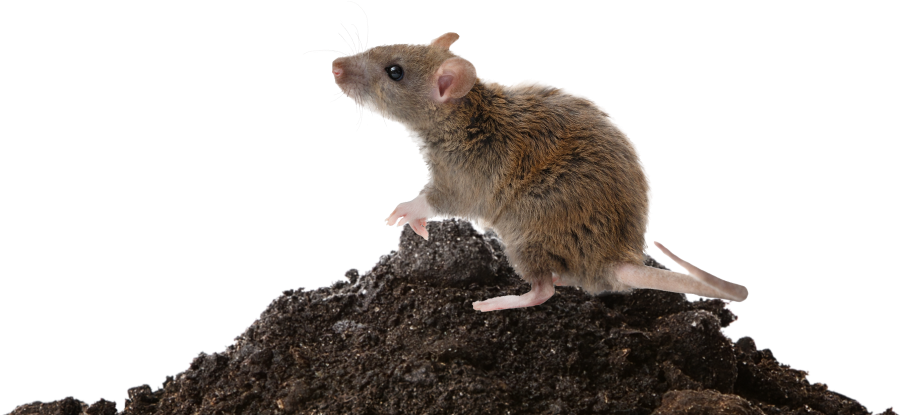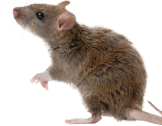Mice Control Sydney



The house mouse originated in Central Asia and spread to other parts of the world via trade routes and human migration. House mice are one of the most common mammals in the world, and they can be found on every continent except Antarctica. Mice are small mammals of the order Rodentia, characteristically having a pointed nose, small rounded ears, and a long naked or almost hairless tail.
The best-known mouse species is the common house mouse (Mus musculus). The average mouse is about the size of a human hand and has a lifespan of two to three years. Mice are known for their poor eyesight and their ability to squeeze through small spaces.
They are also proficient swimmers and often build their nests near water sources. In the wild, mice typically eat seeds, fruits, and insects. However, they are adaptable creatures and often thrive in human settlements where they can find easy access to food scraps and garbage.
It is also a popular pet. In some places, certain kinds of field mice are locally common. They are known to invade homes for food and shelter.
Mice come in a variety of colours, including brown, grey, black, and white. They have four feet,a long tail and small ears. Their noses are pointy, and their eyes are small. Mice vary in size, but most are about 2-3 inches long. Mice have four feet with pointy noses and small eyes.
The life cycle of a house mouse (Mus musculus) is relatively short, with a lifespan of around 18 months.
Mice reproduce quickly, with females able to have up to 10 litters per year.
Each litter usually contains 5-6 young, which are born blind and hairless.
They grow rapidly, reaching adulthood at around 8 weeks old.
Once mature, mice typically live in small social groups, consisting of a single male and several females. Despite their small size, mouse can cause significant damage to crops, stored food, and property, making them a common pest species.
The house mouse (Mus musculus) is a small rodent that is often found in homes. They have grey fur or brown in colour and have a body length of 3-10 cm. Mice are mostly active at night (nocturnal), although some species are known to be diurnal.
House mice are skilled climbers, and can jump up to 15 cm high. They are also good swimmers and can tread water for up to three days. Mice are mostly active at night and will spend their days resting in dark, secluded areas.
Mice are mostly active at night and will spend their days resting in dark, hidden areas such as roof voids or a roof cavity, wall cavities and subfloors. In a home, mice usually stay close to the floor and will build their nests in drawers, cupboards, or behind appliances.
They build nests from various soft materials such as insulation fibres. Indoors, they build nests from paper products, cotton batting, wall voids, and other protected places.
The eyes of a house mouse are large in proportion to its skull and body size and provide good Binocular Vision which assists with depth perception; important to escape danger by running away as opposed to fighting its predator face to face.
Each eye is equipped with a set of muscles that allow it to move independently of the other, giving the mouse binocular vision. This means that the mouse can see objects in three dimensions, which is useful for avoiding predators and locating a food source. However, the mouse's eyes are also very sensitive to light, allowing it to see even in low-light conditions.
Good vision also helps the mouse to detect minute movements around it; allowing it time to react accordingly should a predator come too close for comfort. The positioning of the eyes on either side of the head gives the mouse almost 360-degree panoramic vision; important when trying to escape becoming prey! Interestingly enough, mice have a poor close-up vision but can see clearly up to a distance of around 12 feet away; making this creature an alert, little sentry!
If feeling angry or frightened house mice may bite humans.
If you see any of these signs in your home, it is important to get rodent pest control. Mice can spread disease and contaminate food, so it is important to get rid of mice before they cause any further damage.
The house mouse is an omnivore and will eat nearly anything, both plant and animal material. Some of the plant material that house mice consume includes animal feed, seeds, fruits, and vegetables. They will also eat insects, spiders, other small animals and food wastes.
Mice eat food pellets but prefer pet food, crumbs, seeds, cereal grains, nutmeats, chocolate chips, meats, and cheese. In general, house mice are opportunistic feeders and will consume whatever is available.
In terms of their water intake, house mice are able to obtain most of the moisture they need from the food they eat. However, they will drink from a water source if one is available.
As a result, it is important to keep food and water sources well-sealed and out of reach to help prevent an infestation.
The house mouse, Mus musculus, is a small, nocturnal mammal that is found in homes around the world. There are several reasons why this species is nocturnal.
First, mice are prey animals, and they are more likely to be eaten by predators if they are active during the day.
Second, most mice are very good at hiding, and they are less likely to be seen at night.
The darkness provides a level of safety and security for the mouse, who is vulnerable to being eaten by larger animals or killed by people if it is discovered during the daytime.
Finally, mice are relatively small animals, and they have a high surface-area-to-body-mass ratio. This means that they lose heat quickly, so they are more active at night when it is cooler.
As a result of these factors, house mice are typically most active after sunset and have adapted to a nocturnal lifestyle in order to survive and thrive in their environment.
A house mouse (Mus musculus) can cause many problems in the home.
One of the most serious is the spread of disease. Mice are carriers of a number of diseases, including hantavirus, salmonella, and lymphocytic choriomeningitis virus (LCMV). They can also contaminate food and surfaces with their urine and rat droppings, which can lead to food poisoning.
In addition, mice can cause property damage. They gnaw on electrical wires and electrical cables, and insulation, which can create fire hazards. They also nest in insulation and wall voids, which can lead to structural damage.
Finally, mice are a nuisance. Their constant scampering and chewing can be disruptive.
Their urine has a strong odour that can permeate the home, which can trigger allergies or asthma attacks in susceptible individuals.
As you can see, house mice can be more than just a minor annoyance; they can pose a serious threat to your health and safety. If you suspect you have a mouse problem, it is important to take steps to remove mice as soon as possible. Mice reproduce quickly and can become difficult to eradicate once they establish themselves in an area. An experienced pest control professional can help to identify and eliminate mice infestations.
Fortunately, there are a number of effective pest control methods that can be used to get rid of a house mouse rodent problem.
E1 Pest Solutions is the best choice for rodent control at your home for several reasons. First, our team of highly trained professionals has the experience and expertise for rapid response and effectively eliminating any trace of rodents. Second, we are committed to using only the most advanced and effective methods of extermination, so you can be sure that your home will be free of pests. Third, we offer an integrated pest management program on all of our services, so you can rest assured that your home will be protected against future infestations. When it comes to protecting your home against rodents, E1 Pest Solutions is the clear choice. Contact us today to schedule a free consultation!
Incorporating these measures into your rodent-proofing strategy can significantly enhance your efforts in maintaining a mouse-free home. Remember, consistent prevention is key to avoiding infestations, and professional mouse control services can provide the expertise needed to ensure your property remains pest-free.
For comprehensive rodent management solutions, including Norway rat and roof rat control, explore our pest control packages at E1 Pest Solutions. Contact us for your enquiries, or book now to get started.
Hiring mice control services offers several benefits, including access to professional mouse exterminator expertise, commercial-grade rodenticides and integrated pest management strategies. Our services, such as rodent control in Sydney, ensure efficient and safe removal of pests, minimising health risks and property damage.
The duration of eliminating a mouse infestation varies, typically ranging from a few days to several weeks. The infestation's complexity, the property's size and the effectiveness of the chosen mouse control method, including pest control packages, impact the timeframe.
DIY attempts often fail due to underestimating the infestation, using inadequate methods and not addressing the root cause of attraction. Ignoring professional mouse exterminator advice and not following recommended practices can lead to recurrent infestations.
Mice are attracted to properties with easy access to food, water and shelter. Poor sanitation, unsecured food sources and clutter provide ideal conditions for mice to thrive. Effective mouse control involves eliminating these attractants alongside professional extermination efforts.
We'll be happy to answer any of your questions and help you find the best solution for your team today. Thank you for choosing E1 Pest Control Services!